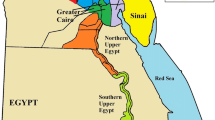Abstract
The tetrameric STRs, HUMTH01, HUMVWA31A and HUMFES/FPS, were studied in a population from the Basque Country (northern Spain) for their frequency distribution and applicability to identity and paternity testing. All systems conformed to Hardy-Weinberg equilibrium; pairwise comparisons demonstrated the allelic independence between loci, and furthermore, all systems seemed to be in agreement with expectations from the Stepwise Mutation Model (SMM) of the mutation-drift theory, which indicates the homogeneity of the population and suggests a replication slippage mechanism as a possible model for generating alleles. A comparison with other population groups appeared to indicate that frequencies are well conserved in Caucasians, but differ from other racial groups. The calculated parameters “a priori probability of exclusion” (PEX) and “index of discrimination” (ID), show the informativeness of these loci for the determination of identity and relatedness of individuals.
Similar content being viewed by others
References
Budowle B, Chakraborty R, Giusti AM, Eisenberg AJ, Allen RC (1991) Analysis of the VNTR locus D1S80 by the PCR followed by high resolution PAGE. Am J Hum Genet 48:137–144
Chakraborty R (1977) Simulation results with stepwise mutation model and their interpretations. J Mol Evol 9:314–322
Chakraborty R, Daiger S (1991) Polymorphisms at VNTR loci suggest homogeneity of the white population of Utah. Hum Biol 63:571–587
Deka R, Chakraborty R, Ferrell RE (1991) A population genetic study of six VNTR loci in three ethnically defined populations. Genomics 11:83–92
Deka R, Chakraborty R, DeCroo S, Rothhammer F, Barton SA, Ferrell RE (1992a) Characteristics of polymorphism at VNTR locus 3′ to the apolipoprotein B gene in five human populations. Am J Hum Genet 51:1325–1333
Deka R, De Croo S, Yu LM, Ferrell RE (1992b) Variable number of tandem repeat (VNTR) polymorphism at locus D17S5 (YNZ22) in four ethnically defined human populations. Hum Genet 90:86–90
Edwards A, Hammond HA, Jin L, Caskey CT, Chakraborty R (1992) Genetic variation at five trimeric and tetrameric tandem repeat loci in four human population groups. Genomics 12:241–253
Gray IC, Jeffreys AJ (1991) Evolutionary transience of hypervariable minisatellites in man and the primates. Proc R Soc Lond 243:241–253
Hammond HA, Jin L, Zhong Y, Caskey CT, Chakraborty R (1994) Evaluation of 13 short tandem repeat loci for use in personal identification applications. Am J Hum Genet 55:175–189
Hochmeister MN, Jung JM, Budowle B, Borer UV, Dimhofer R (1994) Swiss population data on three tetrameric short tandem repeat loci - VWA, HUMTH01 and F13A1 - derived using multiplex PCR and laser fluorescence detection. Int J Leg Med 107:34–36
Kimpton C, Walton A, Gill P (1992) A further tetranucleotide repeat polymorphism in the vWF gene. Hum Mol Genet 1:287
Kimpton CP, Gill P, Walton A, Urquart A, Millican ES, Adams M (1993) Automated DNA profiling employing multiplex amplification of short tandem repeat loci. PCR Methods Applic 3:13–22
Litt M, Luty JA (1989) A hypervariable microsatellite revealed by in situ amplification of a dinucleotide repeat within the cardiac muscle actin gene. Am J Hum Genet 44:397–401
Lorente JA, Lorente M, Budowle B, Wilson MR, Villanueva E (1994) Analysis of short tandem repeat (STR) HUMVWA in the Spanish population. Forensic Sci Int 65:169–175
Möller A, Wiegand P, Grüschow C, Seuchter SA, Bauer MP, Brinkmann B (1994) Population data and forensic efficiency values for the STR systems HumVWA, HumMBP and HumFABP. Int J Leg Med 106:183–189
Nei M (1978) Estimation of average heterozygosity and genetic distance from a small number of individuals. Genetics 89:583–590
Odelberg SJ, Plaetke R, Eldridge JR, Ballard L, O'Connell P, Nakamura Y, Leppert M, Lalouel JM, White R (1989) Characterization of eight VNTR loci by agarose gel electrophoresis. Genomics 5:915–924
Polymeropoulos MH, Rath DS, Xiao H, Merril CR (1991a) Tetranucleotide repeat polymorphism at the human c-fes/fps proto-oncogene (FES) Nucleic Acids Res 19:3753
Polymeropoulos MH, Xiao H, Rath DS, Merril CR (1991b) Tetranucleotide repeat polymorphism at the human tyrosine hydrolase gene. Nucleic Acids Res 19:4018
Puers C, Hammond A, Jin L, Caskey T, Schumm JW (1993) Identification of repeat sequence heterogeneity at the polymorphic short tandem repeat locus HUMTH01 (AATG) and reassignment of alleles in population analysis by using a locus-specific allelic ladder. Am J Hum Genet 53:953–958
Risch NJ, Devlin B (1992) On the probability of matching DNA fingerprints. Science 255:717–720
Sajantila A, Ström M, Budowle B, Tienari PJ, Ehnholm C, Peltonen L (1991) The distribution of the HLA-DQα alleles and genotypes in the Finnish population as determined by the use of DNA amplification and allele specific oligonucleotides. Int J Leg Med 104:181–184
Sajantila A, Pacek P, Lukka M, Syvänen AC, Nokelainen P, Sistonen P, Peltonen L, Budowle B (1994) A microsatellite polymorphism in the von Willebrand Factor gene: comparison of allele frequencies in different population samples and evaluation for forensic medicine. Forensic Sci Int 68:91–102
Smith JC, Newton CR, Alves A, Anwar R, Jenner D, Markham AF (1990) Highly polymorphic minisatellite sequences: allele frequencies and mutation rates. J Forensic Sci Soc 30:19–32
Smouse PE, Chakraborty R (1986) The use of restriction fragment length polymorphisms in paternity analysis. Am J Hum Genet 38:918–939
Wiegand P, Budowle B, Rand S, Brinkmann B, (1993) Forensic validation of the STR systems SE 33 and TC11. Int J Leg Med 105:315–320
Wong Z, Wilson V, Patel I, Povey S, Jeffreys AJ (1987) Characterization of a panel of highly variable minisatellites cloned from human DNA. Ann Hum Genet 51:269–288
Author information
Authors and Affiliations
Rights and permissions
About this article
Cite this article
Alonso, S., Castro, A., Fernandez, I. et al. Population study of 3 STR loci in the Basque Country (northern Spain). Int J Leg Med 107, 239–245 (1995). https://doi.org/10.1007/BF01245481
Received:
Revised:
Issue Date:
DOI: https://doi.org/10.1007/BF01245481



